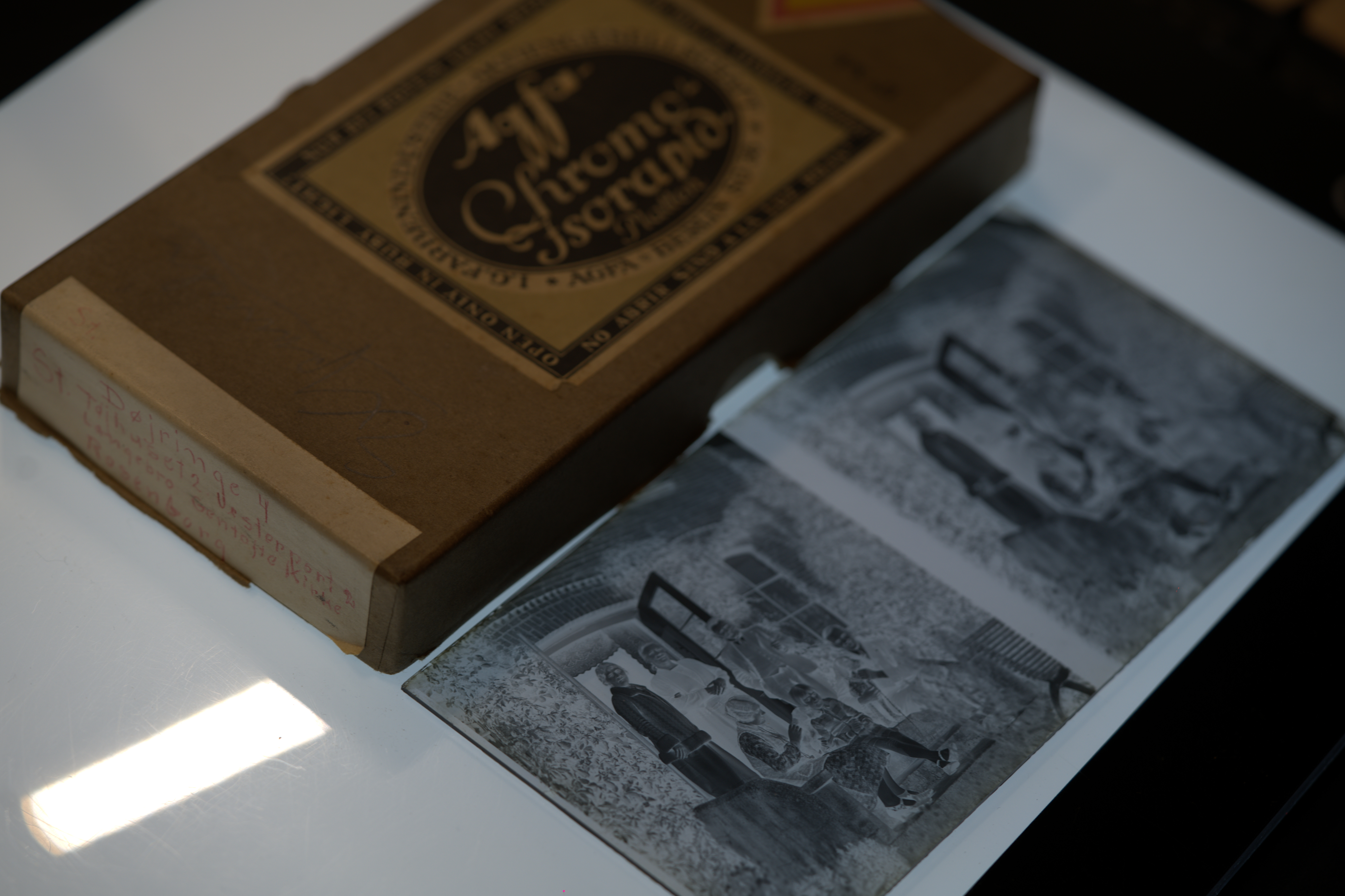A Window into Early Photography
Photography has always been about more than just images—it’s about preserving stories, legacies, and history. For those exploring old family archives or institutional collections, one of the most intriguing discoveries you might encounter is the glass plate negative. These fascinating artifacts are both delicate and powerful, offering a direct window into life from the mid-19th and early 20th centuries.
If you’ve uncovered a box from a parent or grandparent, here’s how to understand and protect these family glass plate negatives.
What Exactly Is a Glass Plate Negative?
Before film rolls and 35mm cameras, photographs were often captured on sheets of glass coated with light-sensitive chemicals. These plates produced negatives, which could then be used to create positive prints. Because of their size and clarity, glass plate negatives often display an extraordinary level of detail, far beyond what many later films could capture.
Common Sizes of Glass Plate Negatives
Glass plate negatives came in a variety of sizes, each suited for different uses. Some of the most common include:
- Whole plate (6.5 × 8.5 inches): Often used for formal studio portraits.
- Half plate (4.25 × 5.5 inches): A popular choice for general photography.
- Quarter plate (3.25 × 4.25 inches): Common in family collections for portraits and smaller images.
- Smaller formats (eighth plate or smaller): Sometimes used in personal or travel photography.
Why Are They Important?
Glass plate negatives are not just old photographs—they are historical documents. They may hold:
- Family legacies: portraits of ancestors, weddings, or homesteads.
- Cultural history: community events, local landscapes, and documentation of early industry.
- Artistic value: many 19th-century photographers used glass plates to achieve remarkable sharpness and tonal depth.
The Challenge of Preservation
Despite their value, glass plate negatives are notoriously fragile. They are prone to:
- Cracking or breaking due to their glass base.
- Flaking or peeling of the photographic emulsion.
- Chemical degradation over time, especially if stored improperly.
Left unattended, these artifacts can be lost forever. That’s why careful handling, proper storage, and professional digitization are essential.
How We Help at Scanthology
At Scanthology, we specialize in the delicate process of digitizing fragile materials like glass plate negatives. Using non-contact overhead scanning systems and archival handling methods, we capture every nuance while ensuring the originals remain unharmed. Once digitized, these images can be preserved, shared, and even restored—giving families and institutions new ways to connect with their history.
We handle items locally with non-contact systems—no overseas shipping, and chain-of-custody from pickup to return.
Looking Ahead
This is just the beginning of our series on glass plate negatives. In upcoming posts, we’ll explore:
- The wet plate process, an incredibly detailed but fragile photographic method of the 1850s–1880s.
- The dry plate era, which made photography more accessible and is often what families encounter in their collections today.
By understanding these early processes, we can better appreciate the importance of safeguarding them for future generations.
Preserve the Past, Protect the Future. If you’ve uncovered glass plate negatives—or other fragile family artifacts—Scanthology is here to help you digitize and preserve them with the care they deserve.
FAQ
Are glass plate negatives worth digitizing if they look fine?
Yes—chemistry still advances deterioration; digitization preserves the image.
What’s the safest way to handle them at home?
Store them in cool/dark places. Keep them in individual archive quality sleeves. And handle them carefully by the edges only. Be careful—often the slides have chipped or cracked edges, and glass can be sharp!
Can I clean a plate myself?
Not recommended; the surface can be irreversibly damaged—consult with an expert first. Most contaminants on the surface can be repaired digitally very easily.
Ready to Preserve Your Family’s History?
If you’ve uncovered glass plate negatives—or aren’t sure what type they are—schedule a complimentary consultation with a Scanthologist. We’ll help you understand what you have, answer your questions, and guide you toward safe preservation—whether you choose to work with us or not.
